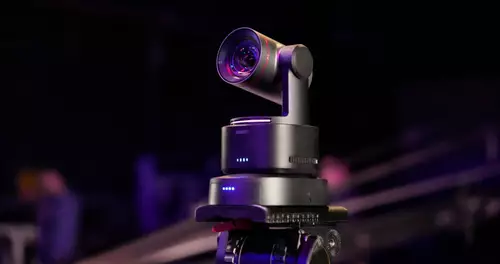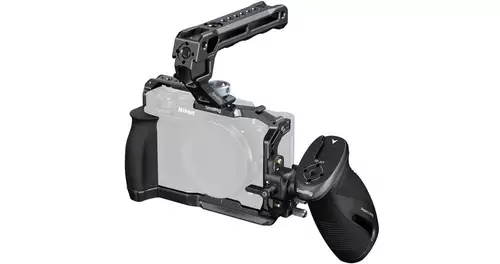Hier geht es zur Newsmeldung mit Link und Bildern auf den slashCAM Magazin-Seiten:
Neue Spekulationen zum Canon Event am 03. November
Neue Spekulationen zum Canon Event am 03. November
-
Christian Schmitt
- Beiträge: 509
" Preis: unter ,000 - möglich bis ,000 "
...na da kann man ja glatt ungesehen zuschlagen;)
...na da kann man ja glatt ungesehen zuschlagen;)
-
marcszeglat
- Beiträge: 310
na, vielleicht gibt es auch eine canon-branded scarlett, oder eine mit canon-optik?!
Das klingt spannend!
Werd ich mir ganz genau anschauen, bevor eine mögliche Scarlet geordert wird.
Werd ich mir ganz genau anschauen, bevor eine mögliche Scarlet geordert wird.
:-) Freu Dich nicht zu früh, das sind bestimmt Dollar!Christian Schmitt hat geschrieben:" Preis: unter ,000 - möglich bis ,000 "
...na da kann man ja glatt ungesehen zuschlagen;)
損したくないあなたはここで買おう
Tja, was war das denn für eine Verarsche. Heut ist auf jeden Fall bisher noch nix passiert in Punkto neue Kamera.
Nuste Meldungen ( und lernt doch mal Zeitzonen)
http://www.canonrumors.com/2011/11/canon-eos-300c-cr1/
B.DeKid
Also wartet doch einfach noch nen Paar Stunden ;-))
http://www.canonrumors.com/2011/11/canon-eos-300c-cr1/
MfGIs this what’s coming today?
Received some information about the new video camera that is being announced today in Hollywood.
Name: Canon EOS 300C
EF and PL Versions
Dual CF Card Slots
Built in ND
Super35 Sensor
HDMI and HDSDI out
Hot shoe mounted monitor w/ 2 XLR ins
1920 x 1080 resolution
Also is able to record out of SDI
B.DeKid
Also wartet doch einfach noch nen Paar Stunden ;-))
@ Jott
Das mit der Zeitzone wußte ich schon ;-) nur nicht, dass die da erst lange ausschlafen müssen.
Das mit der Zeitzone wußte ich schon ;-) nur nicht, dass die da erst lange ausschlafen müssen.
+1! :-)thsbln hat geschrieben::-) Freu Dich nicht zu früh, das sind bestimmt Dollar!Christian Schmitt hat geschrieben:" Preis: unter ,000 - möglich bis ,000 "
...na da kann man ja glatt ungesehen zuschlagen;)
-
iMac27_edmedia
- Beiträge: 1001
Oder andersrum, falls sie einen fiesen Lüfter hat.
-
iMac27_edmedia
- Beiträge: 1001
;-) kommt dann fast aufs gleiche raus!
Wie das Multifunktionsgerät der Familie Hoppenstädt - Loriot!
Wie das Multifunktionsgerät der Familie Hoppenstädt - Loriot!
was ist nun ?
In L.A. ist es jetzt 13.44 Uhr - wie lange schlafen die den noch ?
VG
Jan
In L.A. ist es jetzt 13.44 Uhr - wie lange schlafen die den noch ?
VG
Jan
-
iMac27_edmedia
- Beiträge: 1001
Das ist auch ein Forum mit Canon im Mittelpunkt
http://www.canonrumors.com/forum/index.php?topic=2046.0[/url]
Noch ne Anmerkung, findet dort um 15 Uhr statt! Also musst noch ein wenig warten!
Siehe dem LiveBlog
http://www.engadget.com/2011/11/03/the- ... -liveblog/
und da hättest Dich auch anmelden können
http://www.eventcredentials.com/canon/orginvite.aspx
Und da steht ja Event am 4. und 5. November und starke Nachfrage!
http://www.canonrumors.com/forum/index.php?topic=2046.0[/url]
Noch ne Anmerkung, findet dort um 15 Uhr statt! Also musst noch ein wenig warten!
Siehe dem LiveBlog
http://www.engadget.com/2011/11/03/the- ... -liveblog/
und da hättest Dich auch anmelden können
http://www.eventcredentials.com/canon/orginvite.aspx
Und da steht ja Event am 4. und 5. November und starke Nachfrage!
so, hier schon mal ein Link zur neuen Kamera:
http://nofilmschool.com/2011/11/canon-cinema-eos/
rein äußerlich einziemlich häßlicher Vogel.
http://nofilmschool.com/2011/11/canon-cinema-eos/
rein äußerlich einziemlich häßlicher Vogel.
Ach wirklich ?every four pixels (two green, one red, and one blue) are sampled for each final output pixel. In other words, color is assembled the same way as a traditional three-chip sensor block… two megapixels of red, two megapixels of blue and four megapixels of green (twice as much green as red or blue, since green carries the luminance info). Each primary color sampling off of the sensor is native 1920×1080, each color value alone is equal to the final output resolution. Canon claims that the processed signal has 1,000 lines of TV resolution, and the moire, diagonal line stair-stepping and other artifacts are greatly reduced in this chip compared to HD-DSLR cameras.
Iss ja revolutionär.
Und warum ist es einmal 2 k und einmal 4k ?
Vielleicht sollte man mal die Canon-Specs abwarten, bevor man so einen Mist in sich hineinliest.
Wasted time.
Das scheint ne ganz, stink normale 2 k Kamera zu sein. Das Einzige, das Ihn positiv von den (bisherigen) Vollbildsensoren unterscheidet ist das Pixel Pitch und das geht endlich mal in die richtige Richtung.
Sie haben also nichts anderes getan, als der D5 einen vernünftigen Sensor zu verpassen und den zu prozessen, wie man eben Videosensoren prozessen sollte.
Aber das ist ja nun keine Revolution.
Hi wowu,
die Diskussion wird anscheindend hier weiter geführt
viewtopic.php?p=523216#523216
da steht auch die antwort auf Deine 4k Frage.
Viele Grüße
die Diskussion wird anscheindend hier weiter geführt
viewtopic.php?p=523216#523216
da steht auch die antwort auf Deine 4k Frage.
Viele Grüße
Schönen Dank...
Aktuelle Beiträge [alle Foren]
» Nikon ZR in der Praxis: 6K 50p RED RAW Monster für 2.349,- Euro mit klassenbester Colorscience?
von cantsin - Sa 14:03
von cantsin - Sa 14:03
» DJI Osmo Action 6 - erste Actioncam mit variabler Blende und quadratischem Sensor
von Jott - Sa 11:06
von Jott - Sa 11:06
» Coca-Cola gibt KI als Kreativität aus und lässt Weihnachts-Werbespot generieren
von roki100 - Fr 18:52
von roki100 - Fr 18:52
» Adobe Premiere 25.6 jetzt mit Firefly-, Frame.io V4- und Premiere App-Integration
von slashCAM - Fr 15:02
von slashCAM - Fr 15:02
» Künftige Xbox Next: Vollwertiger Windows-PC mit Potenzial für Videobearbeitung
von Totao - Fr 13:21
von Totao - Fr 13:21
» ARRIs Color KnowHow könnte Millionen Wert sein - als Workflow Lizenz für Dritte
von KI-Robot - Fr 12:08
von KI-Robot - Fr 12:08
» Blender 5.0 ist da: Meilenstein mit vielen Neuerungen für 3D, Animation und Postpro
von MaxSchreck - Fr 9:42
von MaxSchreck - Fr 9:42
» Neue Actioncam DJI Osmo Action 6 soll größeren Sensor und variable Blende bekommen - und ProRes?
von Videopower - Do 23:11
von Videopower - Do 23:11
» Panasonic S5 - Allgemeine Fragen, Tipps und Tricks, Zeig deine Bilder/Videos usw.
von rob - Mi 9:59
von rob - Mi 9:59
neuester Artikel
200 Euro Black Friday Rabatt : OBSBOT Tail 2: KI-gestützte 4K-Kamera für freihändige professionelle Produktion


Impressum | slashCAM Homepage | Nutzungsbedingungen | Datenschutzrichtlinie
Rechtliche Notiz:
Wir übernehmen keine Verantwortung für den Inhalt der Beiträge und behalten uns das Recht vor,
Beiträge mit rechtswidrigem oder anstößigem Inhalt zu löschen.



